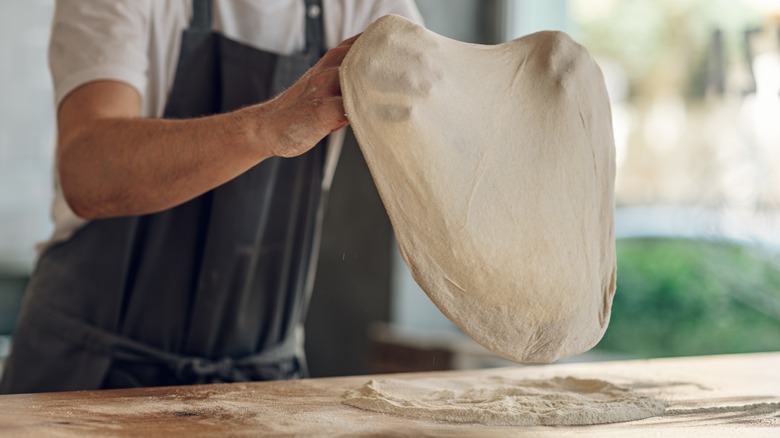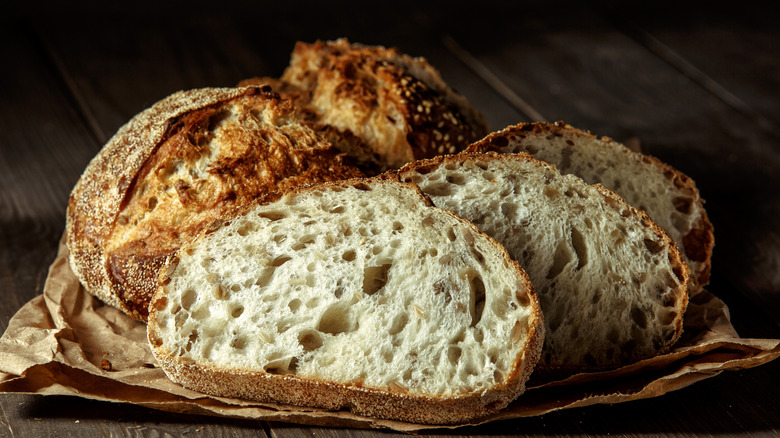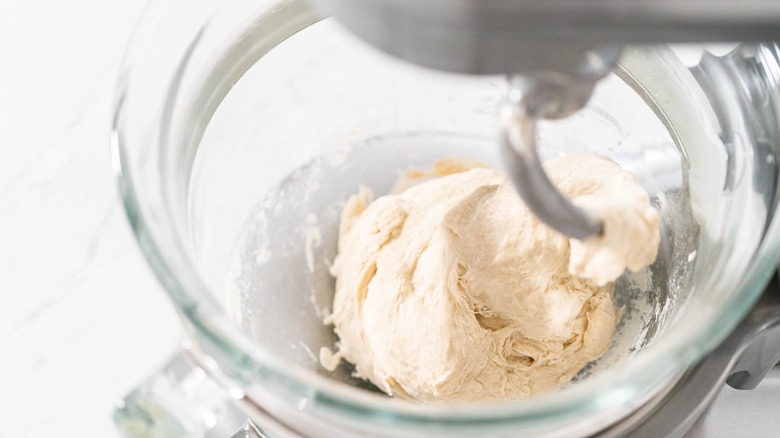The Windowpane Test To Tell When Dough Is Kneaded Just Right
Making bread from scratch is a process that engages all the senses — from the sticky to springy feeling of the dough on your fingertips to the warm, yeasty aroma that greets your nose as it rises. Your eyes are also an invaluable tool for assessing whether you're on your way to the perfect batch of baked goods. Whether you're preparing a basic pizza dough or a more elaborate loaf with your own homemade sourdough starter, give the windowpane test a try!
The windowpane test is easy and can be applied to most simple bread doughs, which are generally made primarily with just flour, water, and yeast. When you think your dough is ready to rest after kneading, hold it in your hands and stretch it so that a section becomes so thin that light passes through it like a window. If it stretches without tearing, your dough is ready to go.
Why we knead bread dough
In addition to the three or four main ingredients in a classic bread dough, the next most important ingredient is air, which comes from the fermentation of yeast. Think about your favorite kind of bread — be it a sweet, pillowy milk bread or a savory, spongy sourdough — and it is likely that the texture is one of the things that you love most about it. This is a result of the bubbles that form while the dough is rising — at room temperature to start and then in the oven.
Air is first incorporated into the dough through kneading. By combining water and flour, you are developing gluten, which creates a kind of structure that expands over time. Be gentle with your dough once it has begun to rise and be sure to keep it in a warm place so that you don't burst the bubbles, ending up with flattened bread!
Tips for kneading with a stand mixer
Humans have been making bread for around 14,000 years, but the stand mixer was only invented about 100 years ago. For yeasted doughs, using a stand mixer tends to be more efficient and consistent than kneading by hand, but you run the risk of missing the signs that indicate when exactly the dough should be left to rest. If you over-knead the dough, your bread will not be able to rise properly, resulting in a dense loaf.
When using your stand mixer, stand close by and watch the transformation happen, stopping to check the elasticity of your dough every couple of minutes. You can tell the dough is done when it clings to the bread hook in the form of a smooth ball and no longer sticks to the walls of the mixing bowl. It should hold its shape in your hands, but the indentation of your fingerprints should quickly disappear when pressed against the dough. While it may be more difficult to do the windowpane test when using a stand mixer, it's one of the best indications of your dough being kneaded just right, so don't skip this step!



